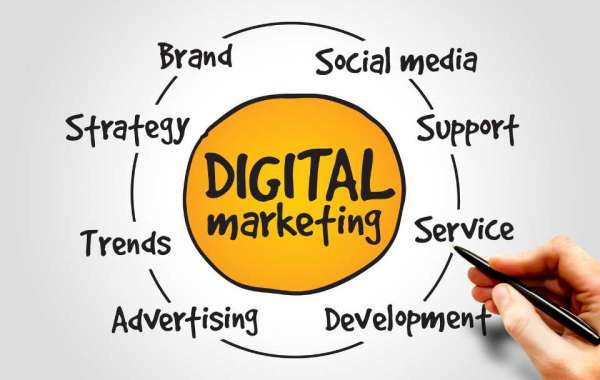Cryptocurrency has reshaped the financial world, and Ethereum stands as one of the most influential blockchain platforms. Even though Ethereum officially transitioned from Proof-of-Work (PoW) to Proof-of-Stake (PoS) with the Ethereum 2.0 upgrade, the concept of mining remains relevant, especially for alternative coins built on similar algorithms such as Ethereum Classic (ETC). Understanding Ethereum mining is essential for those entering the crypto space, and this guide breaks down everything you need to know—from hardware selection to profitability.
1. What Is Ethereum Mining?
Ethereum mining originally referred to the process of using computing power to validate transactions and secure the Ethereum blockchain. In return, miners received Ethereum tokens as rewards. This process involved solving cryptographic puzzles to add blocks to the chain, a function that was critical to maintaining a decentralized network. Although Ethereum now uses staking to achieve consensus, mining knowledge remains useful for mining similar cryptocurrencies that still operate under PoW models.
2. Why Mine Ethereum or Ethash-Based Coins?
Despite Ethereum’s migration to PoS, mining is still possible with Ethash-based cryptocurrencies like Ethereum Classic, Ubiq, and others. These coins use similar mining algorithms and can be mined with the same equipment. Mining provides a way to earn passive income, supports the network, and grants miners control over their digital assets. For many, it serves as an entry point into the broader world of cryptocurrency investment and blockchain technology.
3. Choosing the Right Hardware
To mine effectively, you need the proper equipment. The two main options are GPUs (Graphics Processing Units) and ASICs (Application-Specific Integrated Circuits)
3.1 GPU Mining
GPU mining remains the most popular approach due to its flexibility and accessibility. Top-performing GPUs for mining include the Nvidia RTX 3080, AMD RX 6800 XT, and similar high-end models. When selecting a GPU, consider its hash rate, power efficiency, cooling system, and cost. GPU mining also allows you to switch between different coins as market conditions change
3.2 ASIC Mining
ASICs are purpose-built machines optimized for mining specific algorithms. They offer significantly higher hash rates than GPUs but are more expensive and less versatile. ASIC miners like the Antminer E9 or Innosilicon A10 Pro are commonly used for Ethash mining. If your goal is maximum performance and you’re focused on mining one coin consistently, ASICs are a good investment
3.3 Supporting Components
Your mining rig also requires other components including a compatible motherboard, sufficient RAM (at least 8GB), a solid-state drive (SSD) for the operating system, and a high-capacity power supply unit (PSU). Proper airflow and cooling are also essential to prevent hardware from overheating
4. Setting Up a Mining Rig
Once you’ve selected your hardware, it’s time to assemble your rig. Begin by installing the GPUs on the motherboard using risers if needed. Connect all components, ensure adequate cooling, and install your preferred operating system such as Windows, Linux, or a specialized OS like HiveOS. After the physical setup, install drivers for your GPUs and prepare to load your mining software
5. Selecting Mining Software
Mining software connects your hardware to the blockchain network and manages the mining process. Popular software options include PhoenixMiner, Gminer, TeamRedMiner, and NBMiner. Choose software that is compatible with your GPU and provides tools for monitoring performance and optimizing settings. Most mining applications offer interfaces for adjusting power limits, fan speeds, and clock settings to enhance efficiency
6. Setting Up a Wallet
Before you begin mining, you need a secure wallet to store your earnings. Ethereum-compatible wallets such as MetaMask, Trust Wallet, Exodus, and hardware options like Ledger and Trezor are commonly used. Make sure to back up your recovery phrases and enable two-factor authentication for added security. Use a wallet address when configuring your mining software to ensure that mined coins are sent directly to you
7. Choosing Between Solo and Pool Mining
7.1 Solo Mining
Solo mining involves mining independently without joining a pool. While it allows you to keep all rewards from any blocks you mine, the chances of successfully mining a block alone are low unless you have an extremely powerful setup
7.2 Pool Mining
Most miners prefer pool mining, where they join a collective group that combines computing power to mine blocks more efficiently. Rewards are then distributed based on each participant’s contribution. Popular mining pools include Ethermine, 2Miners, and F2Pool. When choosing a pool, consider factors like payout frequency, pool fees, server locations, and reputation
8. Optimizing for Performance and Efficiency
8.1 Overclocking
Overclocking can increase hash rates by boosting GPU performance. Use tools like MSI Afterburner or AMD WattMan to safely adjust core clocks, memory frequencies, and voltage settings. Be cautious, as improper settings can lead to instability or damage
8.2 Undervolting
To reduce power consumption and keep electricity costs low, undervolting your GPU is just as important as overclocking. This helps extend hardware lifespan while maintaining competitive performance
8.3 Regular Maintenance
Keep your rig clean by regularly removing dust and checking for overheating issues. Monitor temperatures, hash rates, and power usage with software dashboards or third-party apps like Minerstat or Awesome Miner. Staying proactive with maintenance can prevent downtime and hardware failure
9. Calculating Mining Profitability
Mining profitability depends on several variables including your hardware, electricity rates, mining difficulty, and market prices. Use platforms like WhatToMine to estimate daily and monthly profits based on your specific configuration. Input your GPU model, electricity cost per kWh, and pool fee to get an accurate projection. Recalculate profitability regularly, as market conditions and network difficulty fluctuate
10. Legal and Environmental Considerations
Before starting a mining operation, it’s critical to understand the legal framework in your region. Some countries have banned or restricted mining due to its high energy consumption. Always comply with local laws and ensure that your setup does not violate regulations. From an environmental standpoint, consider using renewable energy sources to power your mining rig. Not only does this reduce your carbon footprint, but it can also lower operational costs over time
11. Alternatives to Ethereum Mining
With Ethereum no longer supporting mining directly, many miners are turning to alternatives. Ethereum Classic (ETC), Ravencoin (RVN), and Ergo (ERG) are PoW-based coins that can still be mined using similar equipment. Research each coin’s algorithm, profitability, and long-term viability before making the switch. Another alternative is to pivot from mining to staking if you're interested in Ethereum’s new model, which requires holding ETH in a validator node to earn rewards
Conclusion
While Ethereum itself is no longer mineable due to its shift to a Proof-of-Stake system, mining remains a viable venture for many other Ethash-compatible coins. By investing in the right hardware, setting up a reliable mining rig, joining a reputable pool, and staying informed on trends, you can turn mining into a steady stream of passive income. Whether you’re a beginner or a seasoned crypto enthusiast, understanding the Ethereum mining process empowers you to make smart decisions in the evolving blockchain ecosystem.










